Beginner Triathlon Training: Everything You Need to Know Before Your First Triathlon
14 min readLooking to sign up for your first triathlon? We share everything you need to know about beginner triathlon training and racing—from gear essentials and nutrition basics to mental prep and tips for hiring a coach—to help you have a successful first triathlon. This article was written by Holly Bennett, with contributions from the Triathlete editors.
RELATED: Tri 101 from Triathlete Magazine
What Are Your Beginner Triathlon Training and Racing Goals?
As part of your intro to the sport, consider why you’re taking up triathlon to begin with and what you hope to gain from the beginner triathlon training experience. Are you motivated purely by the desire to have fun and expand your social circle? Are you looking for a fitness kick in the pants to battle the bulge of middle age? Were you inspired by media coverage of a seemingly impossible pursuit? Are you an athletic type already, aiming to be a serious contender? Whatever your reasons at the start, formulating your goals and priorities will help you plan a race season best suited to your desires and strengths.
As you peruse race calendars looking for key events, consider a number of variables and options. Local races are likely to be packed with friends and family for those who thrive on race-day support, while destination travel races can be a unique and wonderful way to explore foreign lands and cultures, albeit slightly outside your comfort zone. Also take into account factors such as altitude (can you tolerate oxygen deprivation, or are you better off at sea level?), weather (will you perform best in hot or cool temperatures, and in a dry or humid climate?) and the course itself (do you prefer an ocean or fresh-water swim, and a hilly or flat course?). Calculate how much time you can allot to training and racing, and be proactive in communicating your plans with your partner or family. Involving those closest to you in your newfound sport and being honest about the anticipated time commitment will go a long way toward avoiding issues of stress and resentment that can develop if an athlete’s focus on triathlon training becomes obsessive.
RELATED: Now Is the Time to Set S.M.A.R.T.E.R. Goals for the 2021 Season
The Beginner Triathlon Training Gear You’ll Need
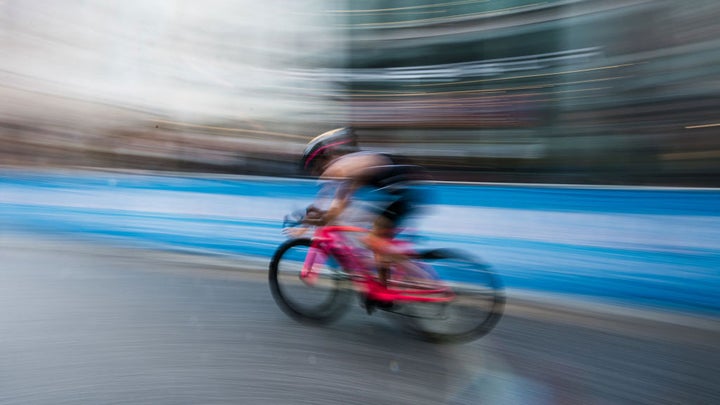
While triathlon racing and triathlon training does require a lot of gear, it doesn’t have to break the bank—especially when you’re first getting started. Chances are, until you have a solid season or two of triathlon training and racing under your belt, you probably won’t know what top-end gear best suits your wants and needs anyway. Start on the frugal end with second-hand items, then upgrade as your ability and experience demands. Craigslist, eBay and even your local bike shop can be great resources for gently used equipment, as are classified boards or forums on your local tri club’s website. Or, post what you’re looking for via social media and maybe you’ll inspire another athlete to upgrade their own beloved bike or wetsuit, allowing you the benefit of a well-cared-for hand-me-down. Look for end-of-model-year sales on bikes if you’re intent on buying new.
For the Swim
Your race kit (either top and bottom or one-piece) is the outfit you’ll wear throughout the swim, bike and run—it’s specifically designed for triathlon because it’s made of a material that will dry quickly after the swim, and has a built-in chamois that will make the bike ride more comfortable but isn’t thick enough to make you feel like you’re wearing a diaper on the run. Choose something snug-fitting (it will stretch when wet) with ample rear pockets to hold energy gels and any other race-essential items (for example, a rescue inhaler if you are asthmatic). Beware of any irritating seams that can lead to painful chafing during a race. If you plan on competing anywhere besides the tropics, a triathlon-specific wetsuit (find our picks for for men and women), designed for swimming mobility and buoyancy, is fundamental. Ideally, take a test swim at a demo event to truly get a feel for how the suit fits in the water—it’s guaranteed to feel too tight on dry land. A pair of goggles that perfectly seal to your face (test the seal in-store before you buy) is the only other swim must-have.
For the Bike
A bike is likely the single largest triathlon purchase you’ll ever make. Focus more on comfort and fit as opposed to aerodynamics as a beginner triathlete to guarantee you enjoy the ride. Start with Retül’s Frame Finder technology (Retul.com) to determine the ideal model and size for you, then search for it second-hand. Never mount your bike without a helmet, requisite safety gear for any race. Sunglasses are also imperative to keep your eyes safe from flying insects and road debris. If you want to make small upgrades, the next steps might be a new saddle, which can fine-tune the comfort level of nearly any steed or bike shoes and cleats with corresponding pedals, which will connect you further to your bike and give you the benefit of the upward portion of the pedal stroke.
Good to know
As part of your beginner triathlon training, consider it mandatory to master basic bike maintenance skills such as changing a flat tire and minor derailleur adjustments. Many cycling retailers or community education programs offer bike maintenance classes, providing an invaluable and simple-to-learn skill set to keep you from being stranded during training or a race.
For the Run
Run shoes are your only additional need for triathlon’s final leg—the same ones you’d sport for any 10K. A simple, inexpensive upgrade that will keep your tri kit free of safety pin holes is a race belt to hold your number.
Good to know
While a triathlon-specific (TT) bike or clip-on aerobars are not essential from the get-go, you’ll come to appreciate them over time. Set your bike up on a stationary trainer before you hit the open road, allowing you to practice getting comfortable in the aero position and clipping in and out of your pedals to avoid the dreaded “turtle” tip-over.
RELATED: The Best Beginner Triathlon Bikes
Beginner Triathlon Training Recovery Rules
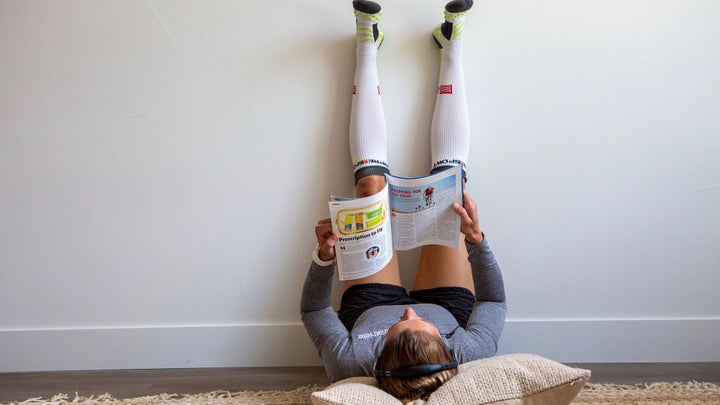
Recovery is as critical a component of triathlon training as swimming, cycling and running. “I like to view recovery as a part of your training program. It shouldn’t be an afterthought, but a catalyst to help you maximize the yield from the hard work you put into training,” said Matt Dixon, founder and head coach of Purplepatch Fitness. “No matter how hard you train, you will not arrive to race day prepared to excel without properly integrated recovery.” Dixon explains that recovery is not as simple as lying on the couch or taking a day off from exercise. He groups recovery into three main areas, the first being a training plan designed with frequent days of lower-intensity sessions to help your body rejuvenate and be prepared for the key training sessions that allow big fitness gains. The second area of recovery involves an athlete’s lifestyle choices, with an emphasis on plenty of sleep and quality nutrition. The final component of recovery includes modalities such as compression, massage, and stretching. “I would not pay too much attention to these,” said Dixon, as their importance pales in comparison to the first two areas. “Get the first two right and you will find great consistency in training, experience less fatigue accumulation, and be at much lower risk of injury. Not only will you be fit, you will also be prepared.”
RELATED: A World Champion’s Top 5 Recovery Tricks for Athletes
The Mental Game
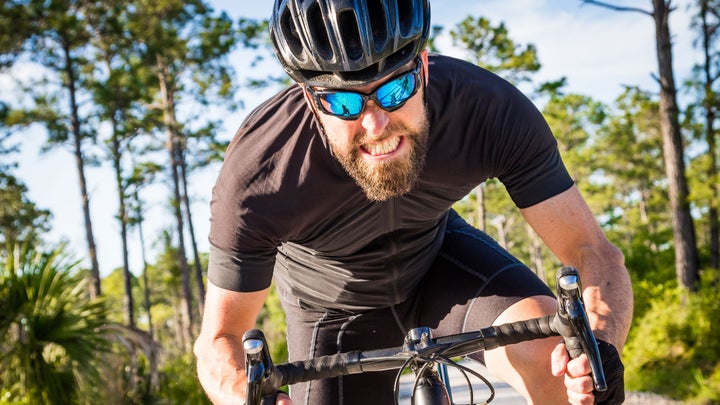
The mental aspect to endurance sports can make or break your race day. Wrap your head around having a positive attitude right from the start, regardless of the end result. In reality, races rarely go 100 percent to plan, so it’s important to keep in mind that each race is a stepping stone. The journey is what triathlon training and racing is really all about—the daily personal challenges and milestones, the people you meet and the lessons learned along the way. And improved physical fitness and top-notch race performances don’t hurt either.
RELATED: Motivation Is the Most Important Mental ‘Muscle’ in Triathlon
Beginner Triathlon Fueling 101
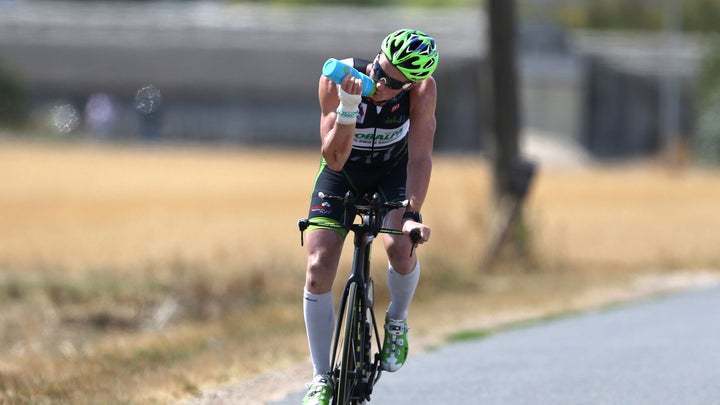
For endurance athletes, nutrition is equally important both on and off the race course.
Racing and Training
A triathlon should not be raced on water alone! Eating and hydrating properly is essential to sustain quality training and to ensure fuel in your tank on race day, advised Magdalena Boulet, vice president of innovation, research, and development at GU Energy Labs (and an Olympic marathoner). “For training sessions longer than 60 minutes, practice fueling and hydrating by taking in 200-300 calories per hour to deliver energy and delay bonking,” Boulet said. “The addition of branched chain amino acids can help reduce mental fatigue and decrease muscle damage. Small amounts of caffeine can enhance performance by increasing focus and decreasing perceived effort during exercise.” As a general rule, Boulet recommends taking one to two 100-calorie gels per hour with water, as well as consuming a 21-ounce bottle of sports drink to maintain ideal hydration status. Within 30 minutes of completing a training session or race, focusing on reparation and restoration is imperative. “Consume a recovery drink with a quality protein source that will help to inhibit muscle tissue breakdown and encourage muscle tissue build-up, as well as carbohydrates to replenish your glycogen stores. This is critical to being able to start your next training session rejuvenated and in a recovered state,” Boulet said.
On race day, you’ll have the option to use nutrition products supplied on course or to carry your own—in water bottles or a bento box on the bike and in a hydration belt, handheld bottle or your tri kit’s pockets on the run. In general, the more liquid a fuel source (think carbohydrate drinks or energy gels), the easier it will be to digest on the go and at race pace. Energy chews provide another easily digestible alternative for people turned off by the texture of energy gel. Ultimately, there’s a highly individual element to sports nutrition dependent on what works best with your own body chemistry, digestive system and taste buds, so trial and error in training is crucial. “Not one recipe fits all, so fine-tune your own ideal fueling protocol,” suggested Boulet.
Round-the-Clock
Kim Schwabenbauer, a registered dietitian, stresses the importance of proper nutrition 24/7 to support an athletic lifestyle. “The body can’t be expected to perform at its peak day in and day out without proper hydration and nutrition,” Schwabenbauer said. “Good nutritional choices involve forethought, planning, and preparation, just like preparing your gym bag or equipment before a big day of training.” Her expert advice for fueling right? “Shop the perimeter of the grocery store for minimally processed food, learn simple cooking preparations that retain nutrients without adding extra saturated fats such as steaming, broiling, baking or grilling, pay attention to your fluid and food intake in relation to how you feel throughout the day, and after workouts of an hour or more in length, make sure to consume a mix of carbohydrates and protein such as chocolate milk, a peanut butter and jelly sandwich or protein and fruit smoothie.”
Schwabenbauer recommended eating lean protein throughout the day, such as eggs or Greek yogurt for breakfast, nitrate-free deli meats, tuna or hummus at lunch and lean beef, turkey, chicken or tofu and beans for dinner. Carbohydrates—the No. 1 fuel source for endurance athletes—should make up a quarter of your plate at each meal (think whole-grain bread, cereal, oatmeal, wild rice, quinoa, barley or whole-grain pasta). Include healthy fats for satiety such as avocado, olive oil, nuts, olives or peanut butter, and aim for four servings each of fruits and vegetables plus lowfat dairy to round out a high-quality nutrition plan. “Athletes should include 50–60 percent of their total dietary intake as carbohydrates, 15–20 percent as protein and 20–35 percent as fat depending on the time of year, preferred choices and their phase of training,” Schwabenbauer said. “Focus less on the quantity of food you are eating and more on the quality of your food. If the quality improves, the content will adjust accordingly and you’ll consume more antioxidants, feel fuller and have more energy, which all supports your ability to swim, bike, run and be healthy!”
RELATED – Ask Stacy: How Should I Approach Nutrition For My First Triathlon?
Do You Need a Coach?
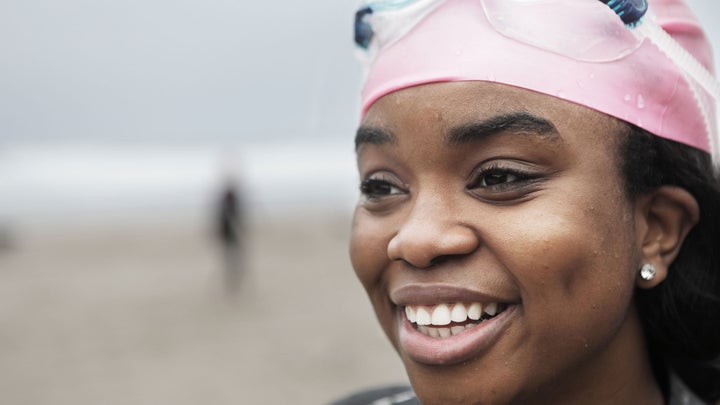
Hiring a triathlon coach is an incredible benefit for those who can afford it, especially as you take on beginner triathlon training. (Monthly fees vary widely depending on the level of coaching and experience level, but are typically $100+ per month). The upsides to having a coach are numerous, including individualized triathlon training plans, performance analysis, feedback, encouragement and—perhaps most importantly—advice on when to back off and how to adjust for bumps in the road such as injury, illness or unforeseen scheduling conflicts. Don’t despair if you can’t afford a coach, however. You’ll glean similar (if not quite as individualized) support and advice from clubs, teams, group training programs, mentors and individual training partners. There’s also a wealth of triathlon training and racing information available online, in books or in magazines (look for an extensive archive of workouts and advice at Triathlete.com). Consider splurging on a training camp (a long weekend or a full week in an endurance-oriented locale) as a great way to kick-start your season, as well as to meet new friends and training partners. You may even find that the expert leading the camp is someone you’ll want to hire as a one-on-one coach down the road.
RELATED: How to Find the Right Triathlon Coach for You
Beginner Triathlon Training Transition Talk
Take these tips and be sure to use them in your beginner triathlon training!
1. Begin removing your wetsuit as you’re exiting the swim, pulling it down to your waist while you’re running. Pull off your cap and goggles, but be sure not to drop them for risk of a gear abandonment penalty.
2. When you arrive at your bike, remove the remainder of your wetsuit, put on your helmet and glasses, then your bike shoes (depending on your comfort level with the flying mount, your bike shoes may already be clipped into your pedals). Don’t forget your race number belt if the race requires you to wear it for the bike leg (check the athlete information packet for this rule).
3. Get on your bike at the designated mount line, or perform a flying mount if you’ve practiced this helpful transition skill.
4. Coming into T2, dismount at the designated line and run with your bike to your transition spot (rehearse your route in and out of both transitions before the race). Leave your helmet strapped until you have racked your bike. Quickly swap your shoes, and grab your race belt, hat and any necessary nutrition, and run out of T2 while you are putting on your race belt and stashing your nutrition into your pockets.
Transition Bag Checklist
Pre-Race/Swim
- Race kit (aka triathlon suit)
- Wetsuit
- Swim cap (usually provided by the race)
- Goggles (bring tinted goggles for sunny conditions, and it’s a good idea to have an extra pair in your bag)
- Timing chip and strap
- Skin lubricant, such as Body Glide (slather any spot that might be irritated by a seam or by skin-on-skin rubbing)
- Sunscreen
- Warm-up clothes
- Pump
- Pre-race nutrition
- Latex or light cotton gloves (prevents micro-tears when pulling on your wetsuit from fingernails or too-hard pulling)
- Plastic bags or old socks (put on your foot to help pull your wetsuit on)
- Lip balm
T1/Bike
- Small towel (helpful to dry off feet)
- Bike shoes
- Bike helmet
- Water bottle with sports drink or water, plus any other on-the-bike nutrition
- Sunglasses
- Flat kit (on bike)
T2/Run
- Race belt and bib
- Nutrition/hydration
- Run shoes
- Elastic shoelaces (to save time by not tying your shoes)
- Socks (if wearing)
- Hat or visor
Post-Race
- Protein-rich snack
- Dry clothes and flip-flops
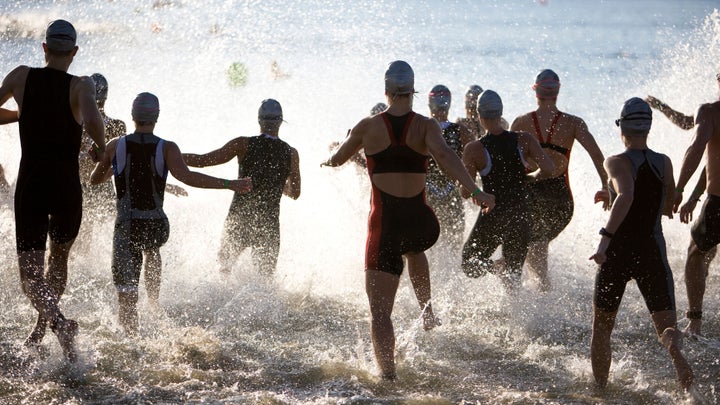
Triathlon Distances
For most people, “triathlon” and “that race in Hawaii” are synonymous–many have seen glimpses of the annual broadcast of the Ironman World Championships in Kailua-Kona, which can give viewers the impression that the sport is a very long, very grueling day of swim, bike, and run. But Ironman is only one of many race distances within the sport of triathlon. From the super sprint to the ultra distance, there’s a triathlon distance for everyone. We recommend starting with a super sprint, sprint, or Olympic and then working your way up if that’s your desire. Remember: you don’t have to go long to be a competitive triathlete.
(Note: distances can vary, especially in shorter races)
Super Sprint
Swim: 500 meters (.3 mile)
Bike: 10K (6.2 miles)
Run: 2.5K (1.6 miles)
How much time will I need to train for a super sprint triathlon?
3-4 hours per week
Super Sprint Training Plan: Tackle Your First Triathlon
Sprint
Swim: 750 meters (.46 mile)
Bike: 20K (12.4 miles)
Run: 5K (3.1 miles)
How much time will I need to train for a sprint triathlon?
3-5 hours per week
Sprint Training Plan: Eight Weeks to Your First Sprint Triathlon
Olympic
Swim: 1.5K (.93 mile)
Bike: 40K (24.8 miles)
Run: 10K (6.2 miles)
How much time will I need to train for an Olympic triathlon?
5-7 hours per week
Olympic Training Plan: Rock Your First Olympic Triathlon
Half-Ironman
Swim: 1.93K (1.2 miles)
Bike: 90K (56 miles)
Run: 21K (13.1 miles)
How much time will I need to train for an Olympic triathlon?
8-13 hours per week
Half Iron Training Plan: 20 Week Training Plan for Your First 70.3
Ironman
Swim: 3.9K (2.4 miles)
Bike: 180K (112 miles)
Run: 42.2K (26.2 miles)
Some Parting Advice for Beginner Triathletes
To close out this beginner triathlon training advice, we’ll refer to a popular article from Triathlete contributor Meredith Atwood.
One of the most common questions I am asked is: “What is your best advice for me—a newbie triathlete?” To which I usually respond, “When I started the sport, I was the size of a small whale. This irony was not lost on me when the best wetsuit for me was, in fact, an Orca brand wetsuit. In that wonderful moment, I learned to never take myself too seriously. That’s my best advice—never take yourself too seriously. We do this sport for fun. Very few of us are actually feeding our families via swim, bike and run.” (Read the rest of her article here.)
So pick a race, have a plan, and then get ready to have some fun. Welcome to the best sport ever!
RELATED: Fitter & Faster Podcast: The Beginners’ Guide to Triathlon







